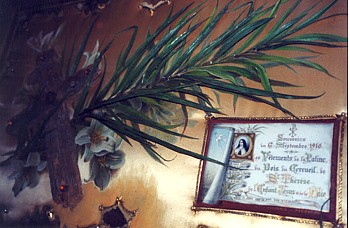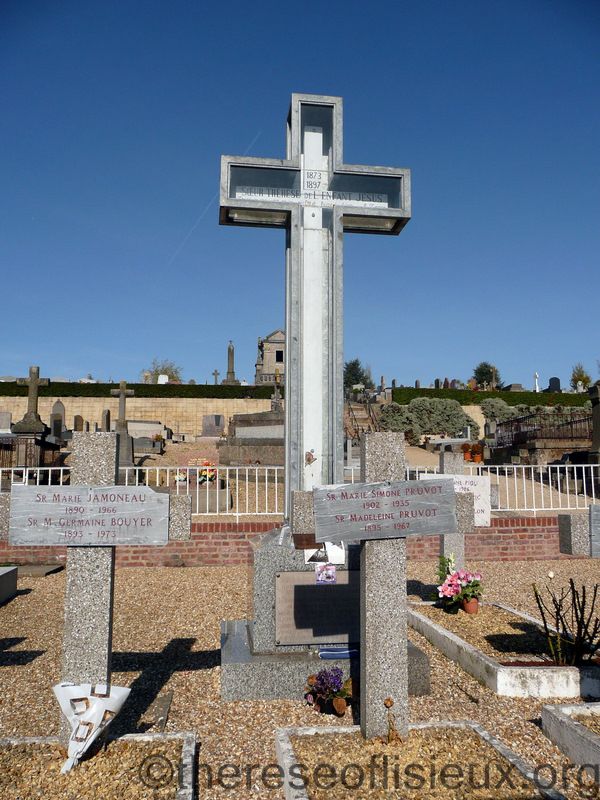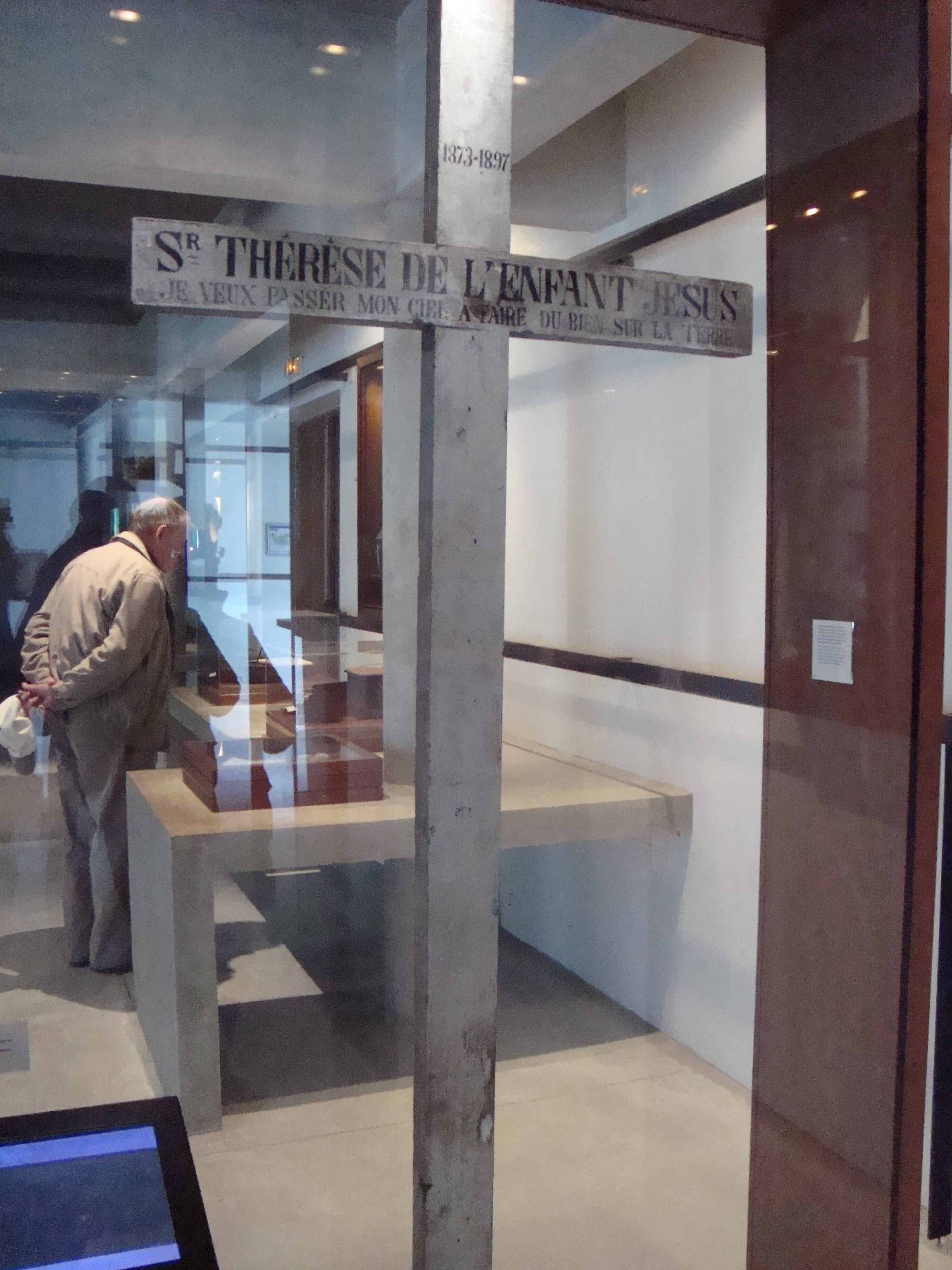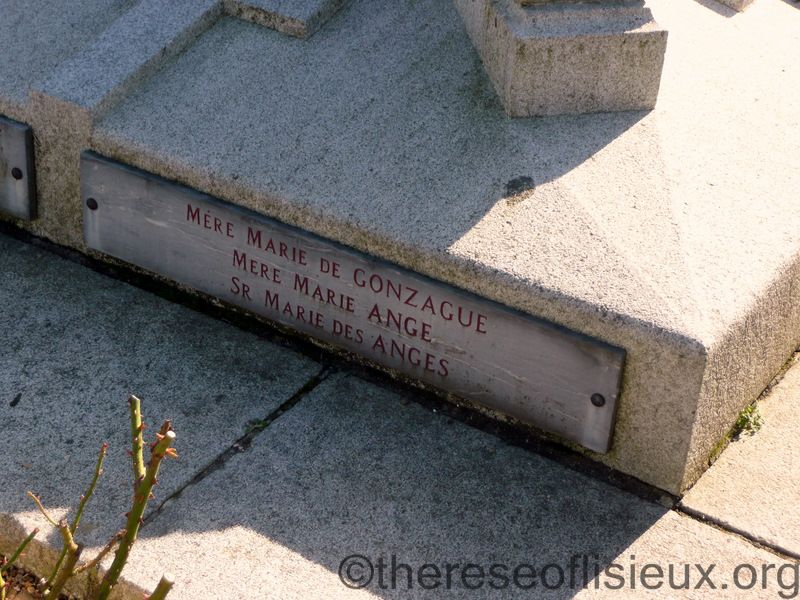Louis and Zélie Martin: A marriage of love
by Guy Gaucher, O.C.D., auxiliary bishop emeritus of Bayeux and Lisieux
published in French in Feu et Lumiere no. 230, July/August 2004. You may now view the French text thanks to the Internet Archive.
translated by Susan Ehlert for thereseoflisieux.org
"I", said Zélie Martin, "love children to madness. I was born to have them." This home, however, might never have existed. Louis Martin, at age 20, was in Switzerland as an apprentice in watchmaking. He discovered the highest monastery in Europe, the Hermitage of the Great St. Bernard of the Canons Regular of Saint Augustine, helpers to mountain climbers during avalanches. The prior was firm: no knowledge of Latin, no postulancy in the monastery. Disappointed, Louis returned to the plain of Alençon and became a watchmaker.
For her part, Zélie Guérin, who wanted to be admitted to the Sisters of Saint Vincent de Paul of Alençon, met with the superior, who said she had no vocation. Zélie decided then to go to lacemaking school to be initiated into the formidable art of precision of making Point d' Alençon lace, a "collective masterpiece."
In 1853, at twenty-two years of age, she established herself, with her sister Elise as a "manufacturer of Point d' Alençon," employing women who worked at home, then brought their work to her to assemble. She had also to find clients, fill their orders, and keep her "office" in their house on the rue Saint-Blaise.
The watchmaker married the lacemaker on July 13, 1858 in the Church of Notre Dame at Alençon. "They were married and had many children." Thus ended the tales that delighted us in childhood.
An idyllic tale?
One must read the letters of Zélie (there are 218 left) that were spread out from 1863 to 1877, the year of her death. Republished as a book, Correspondance Familiale, they follow the ordinary life of this family according to the rhythm of the births, the mourning periods, throughout the War of 1870, the economic crises, above all the family joys, but they end brutally with a drama: the death of Zélie, of cancer, at age forty-six, leaving Louis in charge of his five minor daughters: Marie, Pauline, Léonie, Céline, and Thérèse.
In fact, the nine children all had “Marie” for their first Christian name; they were distinguished by the name that followed. How could one be surprised that Therese might write of "the maternal preferences of heaven’s Queen for our family" (Ms. A, 2r).
After the death of Zélie, under the friendly urging of his brother-in-law, Isidore Guérin, a pharmacist living in the shadow of the Cathedral of Lisieux, Louis agreed to uproot himself from his friends and his environment for the good of his daughters. He moved to Lisieux, where their education was facilitated by the family friendship of the Guérin household, which itself had two girls, the cousins Jeanne and Marie. This is how there came to be a “Thérèse of Lisieux.”
An ordinary family....hardly ordinary
The Martins in Alençon? A family like others. Merchant craftsmen: a watchmaker who works alone, puts together and repairs watches for twenty-one years at 17 rue du Pont Neuf. He helps his wife with her business, she who unceasingly works her "Point d'Alencon."
The life of their family, which grows regularly, is one of their centers of attention. Their recreations, within the family, are simple. Zélie and Louis lost four children because of infant mortality: Marie-Hélène, Marie-Joseph, Marie-Jean-Baptiste, Marie-Mélanie-Thérèse, a terrible reality in this 19th century.
What is less ordinary is the place that God holds in their personal and communal life.
Few parishioners of Notre Dame Church go every day to the 5:30 a.m. Mass, the "workers' Mass." In all things, God is first. The family prayer is twice daily, governed by the liturgy and the Angelus. Christmas; Lent; Easter; May, the month of Mary; the feast of the Assumption on August 15th all have a central place in the family life. The children are profoundly marked by this rhythm. Masses, Vespers, Compline, missions, often with very long sermons, bring the family together in church.
Louis Martin respects scrupulously not working on Sunday, preferring to lose all his clientele, and he respects the rigorous fasts the Church requires during Advent and Lent.
Zélie’s spirituality is marked by that of the Visitation Order, where her sister, who has become Sister Marie-Dosithée, entered in 1858. Zélie, who is a member of the Third Order of the Poor Clares, also has affinities with Saint Francis of Assisi.
From her childhood, which was not happy (her mother was very harsh), she kept her worry and fear to herself, as many people did during that epoch. Her deeper life is union with God in the daily life of a mother of a family of five children, with the worry about Léonie, more difficult than the others; elderly parents; and young country maids who bring her worries more often than effective assistance.
Louis Martin had kept his sense of the inner life; of personal prayer; in fact, of contemplation; of his desire to be a monk. He loves pilgrimages and participates in several, including pilgrimages to Chartres, Lourdes, and Our Lady of Victories.
His favorite pastime is fishing. He is also a good billiard player. He meets his Alençon friends at the Catholic Circle and participates in the nocturnal adoration of the Eucharist.
One might fear that such a household might not be much fun. According to the daughters who lived there, it wasn't like that at all. It had atmosphere, gaiety, games, celebrations, and family outings.
These Christians are not wrapped up in their piety. "If you do not love your sister or brother, whom you have seen, you cannot love God, whom you have not seen.” (1 John 4:20)
They quietly live a concrete charity in which they engage themselves physically. Thus Zélie, in spite of her fears, will help two little girls terrorized by two women posing as nuns. She was obliged to testify at the police station. Louis welcomes an epileptic he met at the train station and helps to take care of him. They had the same concern for the homeless of their time. They didn't hesitate to invite to their dinner table the tramps they met in the street. They visit the elderly and teach their children to honor the poor and to treat them as equals. Thérèse would be forever marked by this attitude.
A mother stricken
Louis and Zélie live a Passion, each in her or his own manner. When, in December 1876, Zélie learns that she has an inoperable cancer that leaves her without hope, Louis is "overwhelmed;” panic takes over his household.
With a heroic courage, Zélie faces death, working until the limit of her strength, going to Mass each morning until the end. A pilgrimage to Lourdes, filled with deplorable incidents, will add still more to her sufferings. Her worry is the future of her five daughters. She worries above all for "poor Léonie," who, as Zélie knows, is more fragile than the other girls. Zélie will leave her family on August 28, 1877.
A father humiliated
The passion of Louis will be of another kind. From November 1877 onward, he lived as a renter in the house of the Buissonnets, which he leased in Lisieux. He accepted giving all his daughters in turn to God: Pauline (1882); Marie (1886); Léonie (who would make several tries in religious life and would finally become a Visitation nun in Caen in 1899); next his little Queen, Thérèse (1888). Céline enters the Carmel in 1894.
Louis’s shaky health deteriorated more and more until a serious attack made it necessary for him immediately to enter the Bon Sauveur asylum in Caen. Today we call it a psychiatric hospital, but in 1889 people called it the "insane asylum” instead.
Here is the venerable "Patriarch" in the middle of five hundred sick people of all kinds. He became number 14449. The man so esteemed and so respected sank into the worst kind of decline. He drank “the most bitter and most humiliating of all chalices," wrote Thérèse in Ms. A, 73r. Most of the doctors diagnosed him with cerebral arteriosclerosis and kidney failure. This is how the family broke apart. The lease of Les Buissonnets was terminated. Three of the daughters were Carmelites.
Unhealed, Louis Martin was returned to the Guérin family, who lodged him next door to their house in Lisieux, where Céline aided him night and day. He spends his vacations on the property of La Musse, which the Guérins inherited. He is like a child who perpetually asks for help. He dies on July 29, 1984, and is buried in the Lisieux cemetery.
In 1888, when the priest of St. Pierre’s Cathedral, Louis’s parish church, announced that he was starting a fundraising drive for a main altar, Louis donated the entire sum for the altar. Thérèse commented, "Papa had just made a donation to God of an altar, and it was he who was chosen as victim to be offered with the Lamb without spot.” (Ms A, 71v).
Re-reading the life of her family in the light of Merciful Love in 1895, Sister Thérèse of the Child Jesus wrote, evoking the day of her reception of the habit in Carmel where she was on the arm of her "dear King": "January 10 . . . was my King’s day of triumph. I compare it to the entry of Jesus into Jerusalem on the day of the palms. Like that of our Divine Master, Papa’s glory of a day was followed by a painful passion, and this passion was not his alone. Just as the sufferings of Jesus pierced His Mother’s heart with a sword of sorrow, so our hearts experienced the sufferings of the one we cherished most tenderly on earth. I recall that during the month of June 1888, at the moment of our first trials, I said," I am suffering very much, but I feel I can still bear greater trials." I was not thinking then of the ones reserved for me...I didn't know that on February 12, a month after my reception of the Habit, our dear Father would drink the most bitter, the most humiliating of all chalices.
Ah! that day, I didn't say I was able to suffer more! Words cannot express our anguish, and I’m not going to attempt to describe it. One day, in Heaven, we shall love talking to one another about our glorious trials; don’t we already feel happy for having suffered them? Yes, Papa's three years of martyrdom appear to me as the most lovable, the most fruitful of my life; I wouldn’t exchange them for all the ecstasies and revelations of the saints. My heart overflows with gratitude when I think of this inestimable treasure that must cause a holy jealousy to the angels of the heavenly court...." (Ms A, 73r).
On July 26, 1897, very close to her death, Thérèse, herself living a physical and spiritual "passion,” wrote to Fr. Bellière a resume of the history of her family. She began thus: "The good God gave me a father and a mother more worthy of Heaven than of earth" (LT 261).
In 1888, shortly before Louis Martin fell ill, he wrote to his three Carmelite daughters, "I insist on telling you, my dear children, that I am urged to thank and to have you thank God, for I feel that our family, though very lowly, has the honor of being numbered among our Creator’s privileged ones.”
A miracle for their beatification
A very serious investigation of the Martin parents has been conducted by the Church from 1967 until now. To declare them blessed a miracle was missing. Here it is:
Little Pietro Schiliro, born at Monza on May 25, 2002 into a family of four children, was healed on June 28th, 2002, of a very serious and fatal pulmonary illness after two novenas to the Martin parents.
A Process was conducted in the diocese of Milan and came to a favorable conclusion. Cardinal Tettamanzi closed it in Milan on June 10th, 2003. The medical dossier of the healed child numbers 967 pages! [Editor's note: after this article was written, of course, the miracle was accepted, and Zelie and Louis were beatified on October 19, 2008).



























